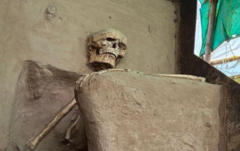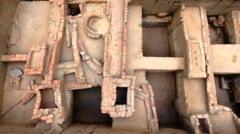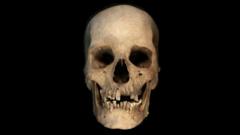A remarkable archaeological find—a 1,000-year-old human skeleton discovered in a sitting posture in India—still lacks a permanent resting place, trapped in a maze of bureaucratic delays six years after its unearthing. The skeleton, located in Vadnagar, Gujarat, was initially uncovered by archaeologist Abhijit Ambekar in 2019, who noticed a human skull at a dig site. Excavations revealed the well-preserved remains resting in a cross-legged position, signifying possible ties to the Solanki period from 940 to 1300 CE.
Despite the skeleton's immense historical value, disputes among officials have left it housed in a makeshift tent near a newly constructed archaeological museum. Ambekar emphasizes the skeleton’s importance, stating it could provide deeper insights into the region's past and the lives of ancestors. While around 9,000 other artifacts from Vadnagar have been distributed to local museums by the Gujarat state government, the skeleton remains unaccounted for, caught in a web of administrative challenges.
The state's Directorate of Archaeology and Museums attributes the delay to improper protocols following the skeleton's excavation. Pankaj Sharma, the director, remarked on the situation while assuring ongoing efforts to relocate the skeleton to a museum. Nearby, a newly built Archaeological Experiential Museum, which showcases extensive artifacts from Vadnagar's 2,500 years of history, notably lacks the actual skeleton, instead featuring only a photograph.
Vadnagar's archaeological significance is substantial; excavations have unveiled human remnants dating back over two millennia, alongside ancient Buddhist structures and artifacts like terracotta figurines. This skeleton is believed to be of a man in his forties, and further analysis is hoped to unravel more details about his life and the burial practices of the time.
Local residents express frustration over the handling of this unique treasure, questioning the bureaucratic inefficiency that permits such a significant artifact to remain exposed and vulnerable. The skeleton not only represents a crucial link to the past but has the potential to attract tourism and promote pride in the region. Many locals voice hope for the skeleton to find a proper, climate-controlled home soon, ensuring its preservation for future generations.





















